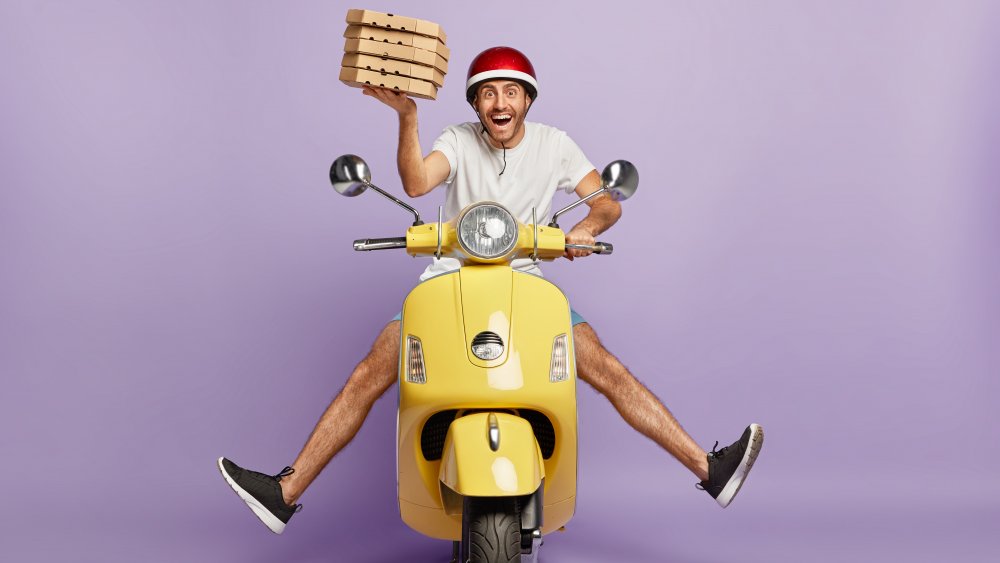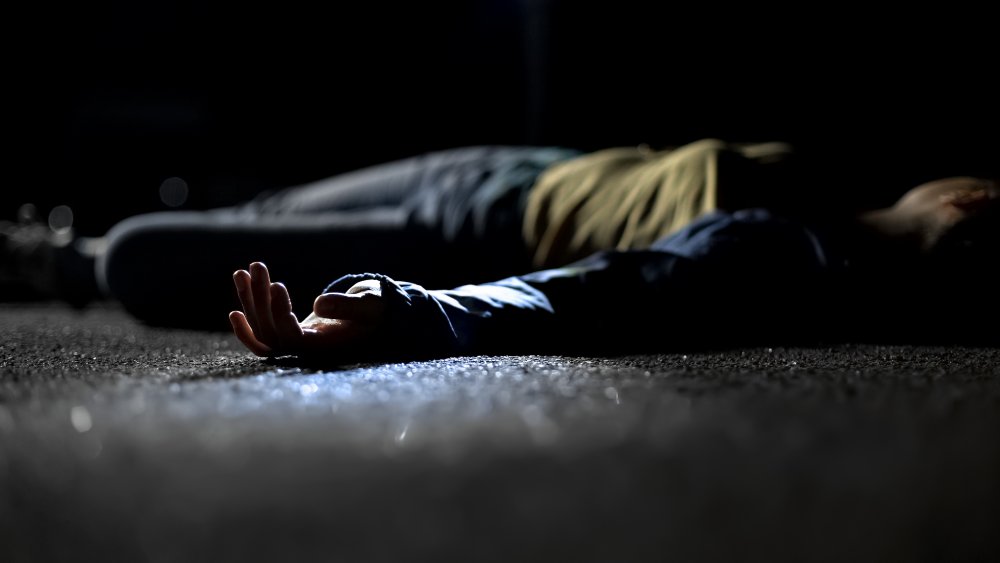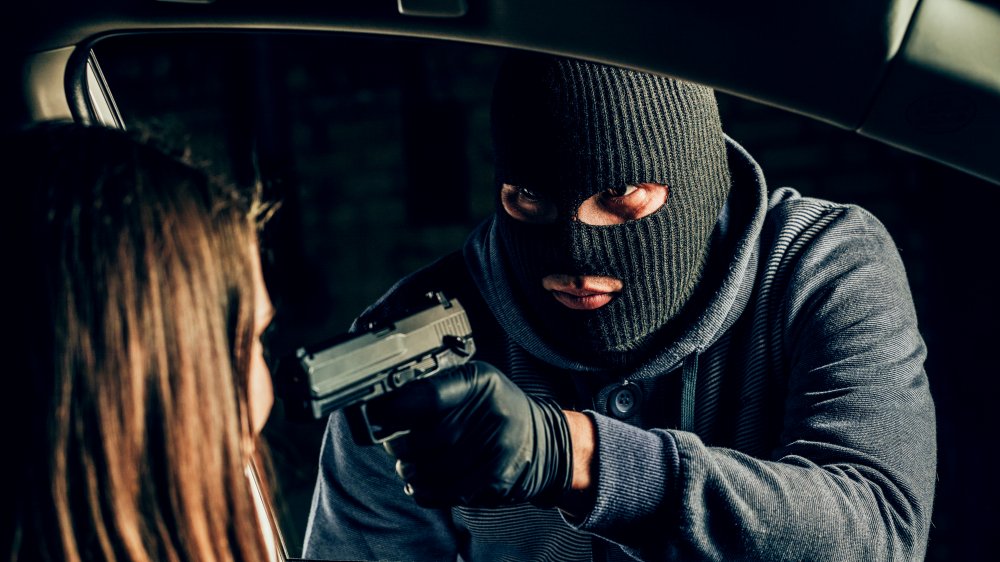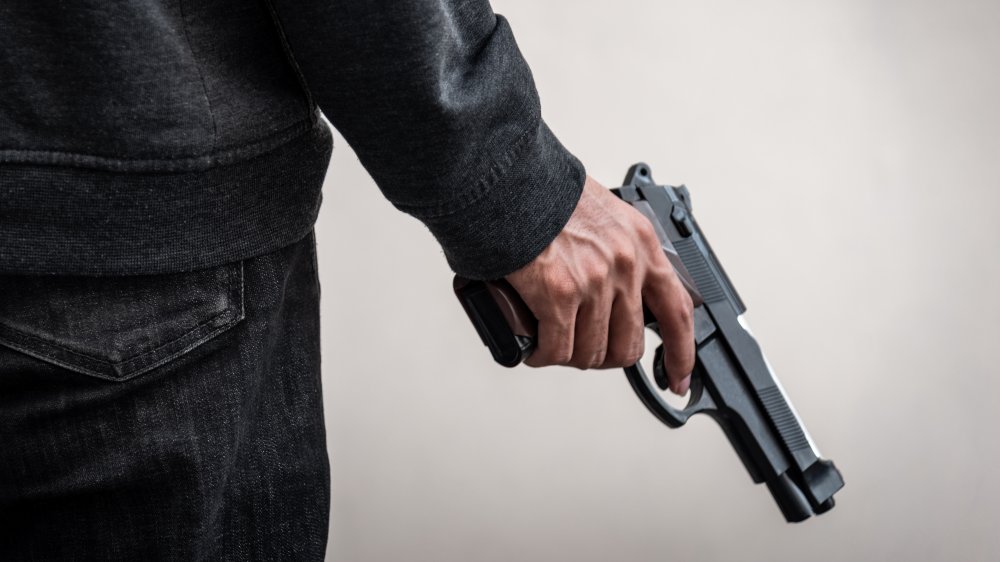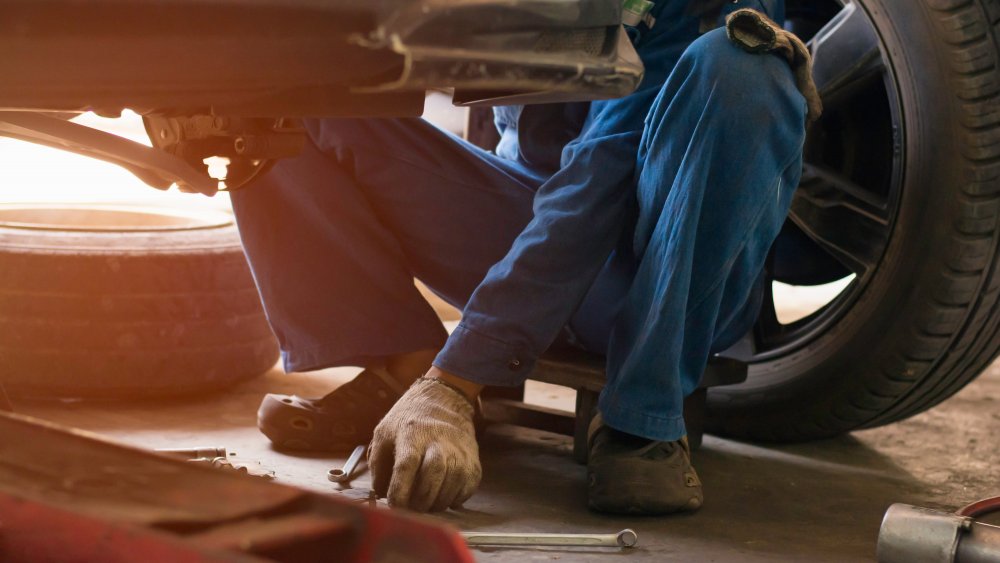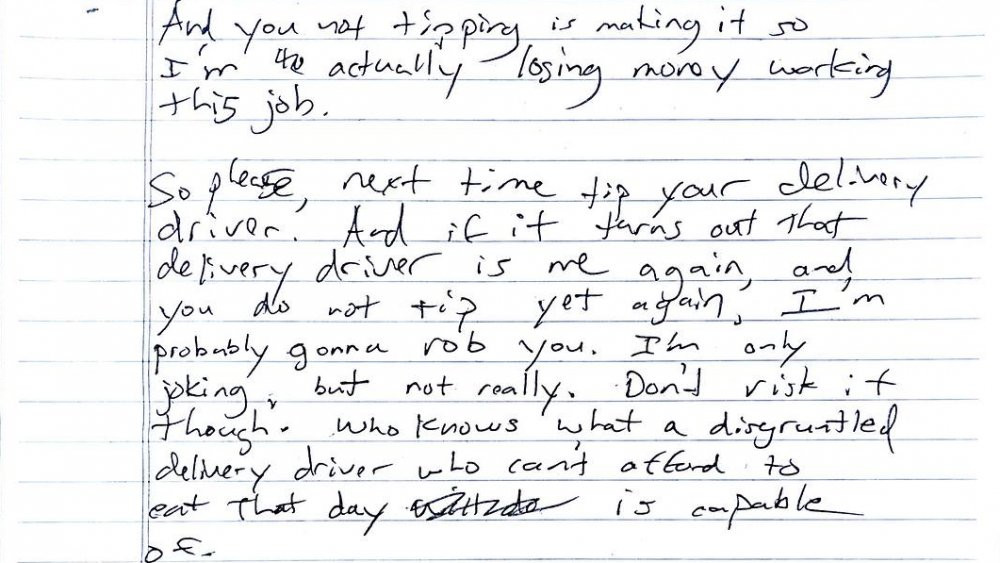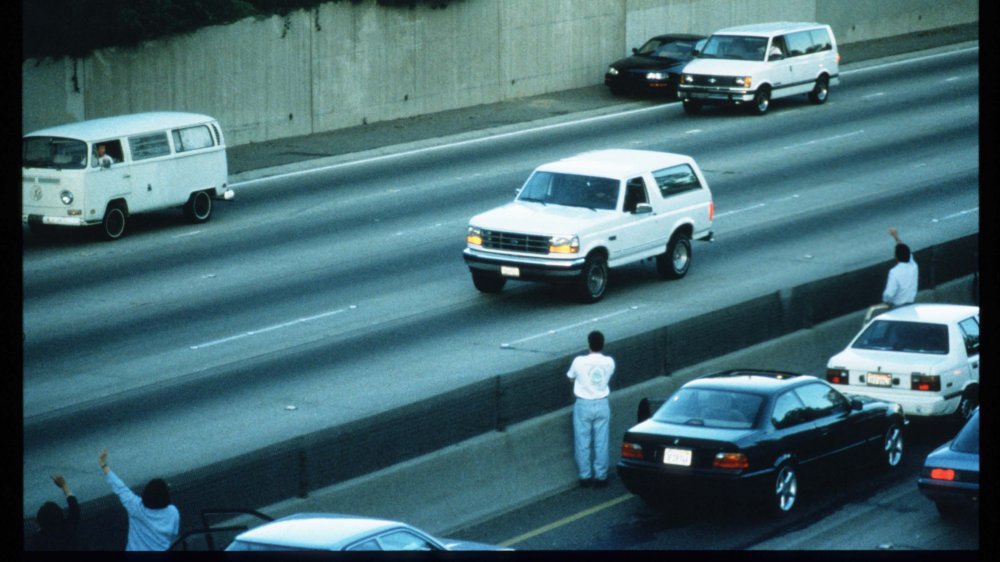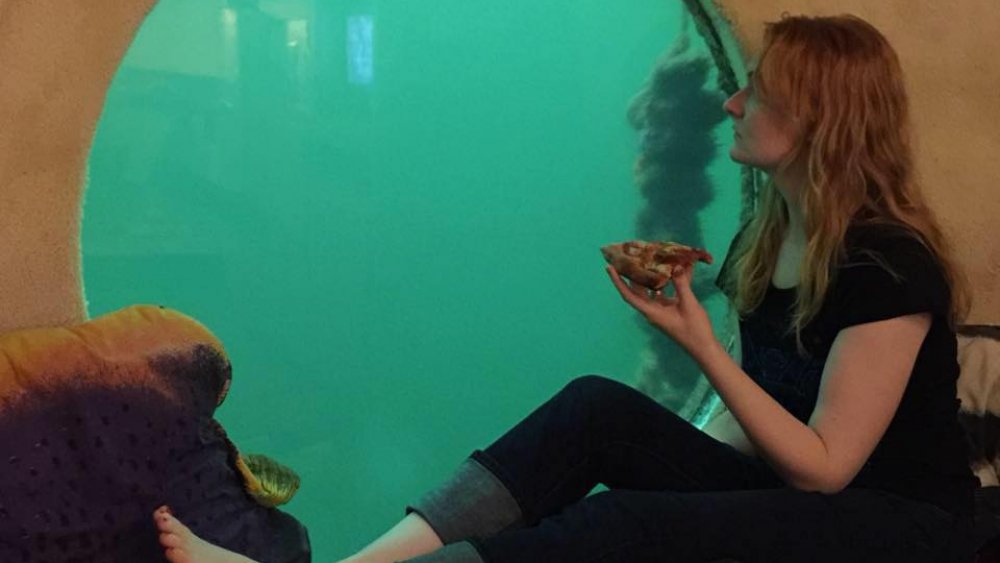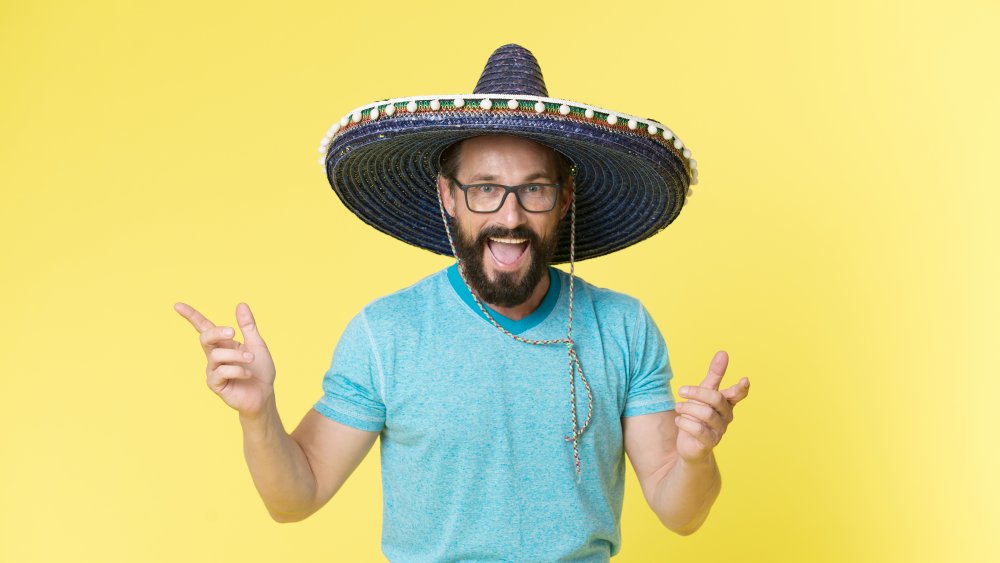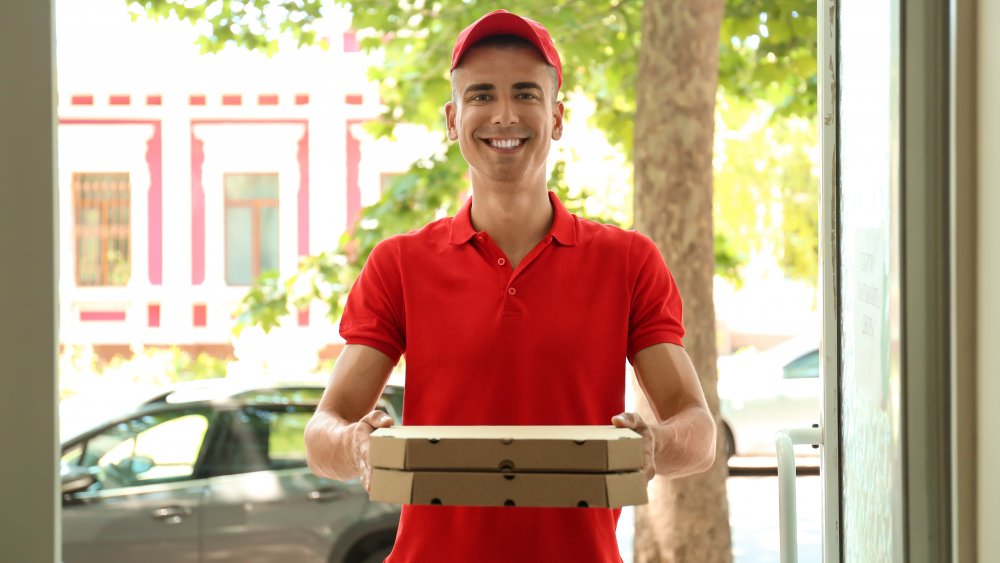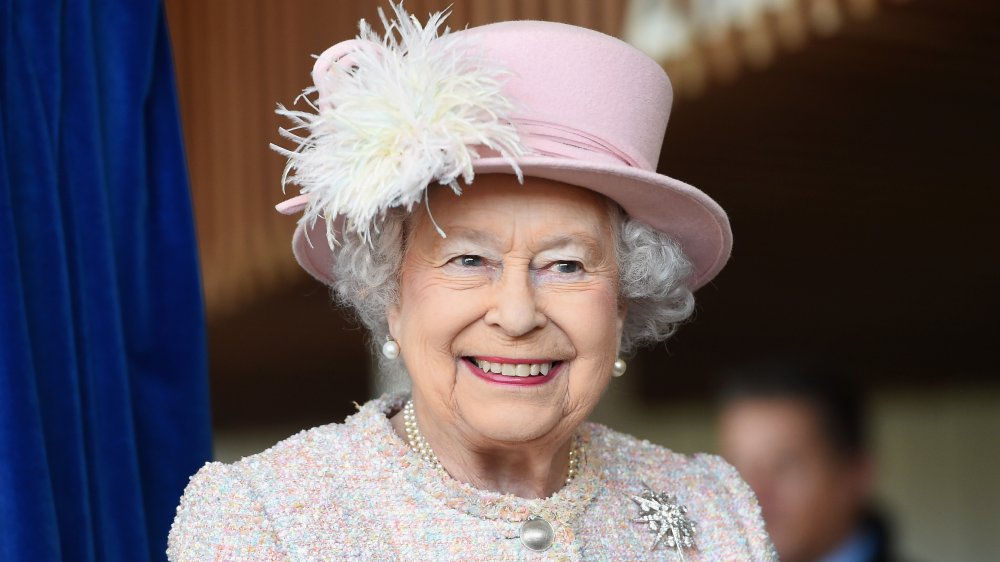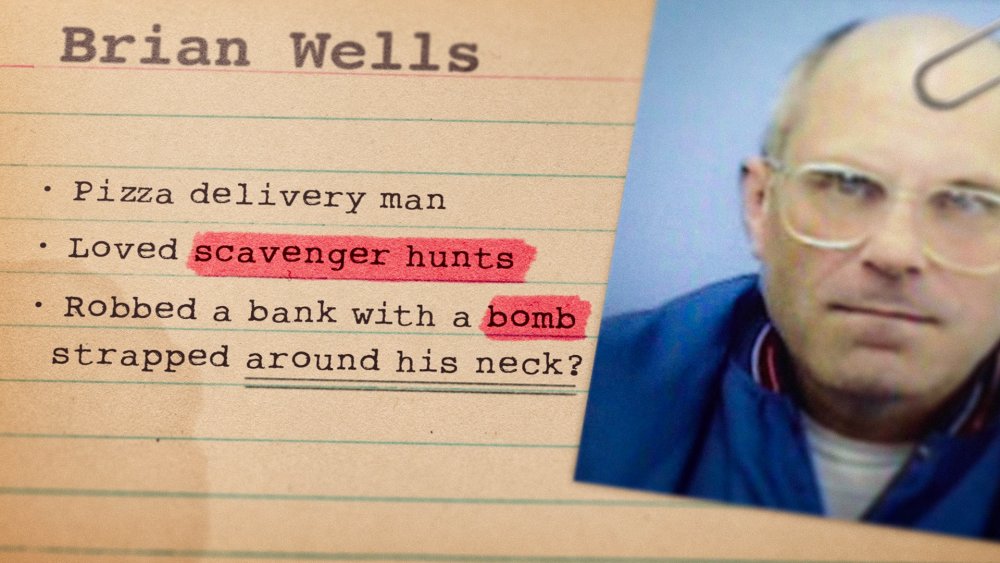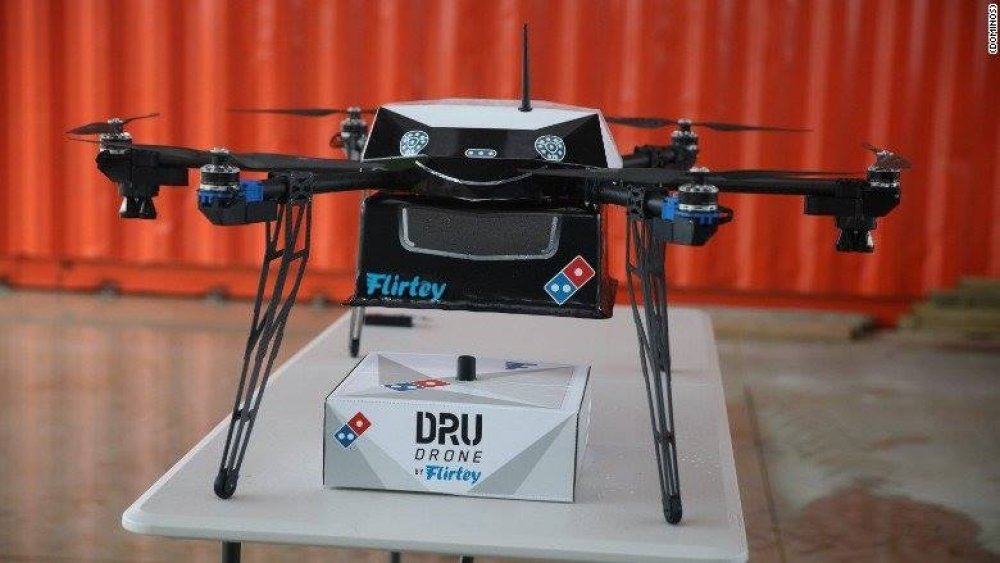Here's What You Don't Know About Pizza Delivery Drivers
Sorry burgers, pizza is America's fast food. According to stats (and The Washington Post) Americans dig into the equivalent of 100 acres of pizza every day. Or to put it in an easier-to-swallow context, we scarf down 350 slices a second.
As ubiquitous as pizza pies are the brave women and men who deliver them to us, hopefully in a still-crunchy state of piping hotness. We encounter these unsung heroines and heroes on doorsteps and in elevators, on bikes and in cars (and even on jet skis), from coast to coast. But other than the brief yet magical transaction wherein a boxed pizza is exchanged for a (hopefully generous) tip, what do we really know about their professional woes and triumphs?
In an attempt to reveal some of the lesser-known perils, problems, pranks, and pleasures of the pizza delivery segment, here is a behind-the-crust glimpse into the life of a pizza delivery driver.
Being a pizza delivery driver is 'one of the most dangerous jobs in America'
Back in 2015, Vice published a much-cited article that landed like a bomb. It began with the scary but true tale of Josh Lewis, a college student/pizza driver from Louisville, Kentucky. During a delivery, an assailant stabbed him with a knife and took off with his Jeep. Despite the "blood cascading down his back," Lewis heroically delivered the pizza he was carrying before being rushed to ER with a collapsed lung and punctured liver.
Lewis' viral story is only one of many frequently reported instances of pizza delivery drivers being robbed on the job, which have become a constant fixture on local and national news. Vice bullet points some of the grizzlier episodes. A Maryland driver swarmed by four machete-wielding assailants. A Bay Area driver robbed at gunpoint and then raped by a 17-year-old. An Alabama driver almost beaten to death. A New Orleans driver who was shot and killed. In the last two cases, the drivers had less than $20 on them.
In a 2018 Coworker.org survey, 22 percent of pizza and food delivery workers identified robbery as a major problem with the job. They're backed up by hard stats: In 2018, "driver-sales workers and truck drivers" — which includes pizza delivery drivers — ranked seventh on the U.S. Bureau of Labor Statistics' list of most dangerous jobs, with assault and robbery accounting for roughly "a quarter of all fatalities."
Pizza delivery drivers are 'soft targets'
Plundering pizza delivery drivers is a relatively new-ish phenomenon that kicked into high gear at the end of the aughts, according to Dayton, Ohio, crime prevention officer Ronald Strehle in an interview with Vice. Strehle blames word of mouth among would-be criminals for the escalation of attacks. The fact that pizza drivers are out alone, often after dark and supposedly unarmed, makes them vulnerable. The fact that they're toting a tempting combination of cash, food, a cell phone and a vehicle makes them into targets as appealing as they are easy.
A common strategy of most thieves is to place an order that lures unsuspecting drivers out to abandoned homes or construction sites. Once drivers are isolated, stealing their cell phones prevents them from reporting the crime until later. Strehle estimates that the majority of perps provide some warning tip offs. He gives the example of a Dayton caller who ordered a pizza with "any toppings" and "any kind of soda," and then left a premonitory note on the door of an abandoned house that read: "Door broken, come around back."
As a result of such schemes, many pizza chains across the U.S. have allowed their franchises to create "no delivery zones" so that drivers can avoid delivering to high-crime areas. While these measures may enhance drivers' safety, such zones are controversial in that they exclude residents of poor and/or crime-heavy neighborhoods from getting their pizza fix.
Despite 'no weapons' policies, some pizza delivery drivers pack guns
In the U.S., major pizza chains including Domino's, Pizza Hut, and Papa John's, have corporate policies against employees, including pizza delivery drivers, carrying guns while on store premises. However, that doesn't mean that drivers don't pack pistols along with the pepperoni pizza they're delivering.
According to the Daily Caller "despite most national chains' prohibitions, it is common for delivery drivers to carry guns on the job." As Dayton police officer Strehle argues: "If you're working a $10 or $15 an hour job, some drivers think [carrying a gun] is worth the risk of getting fired." On the subreddit TalesFromThePizzaGuy, many drivers admitted to not only carrying guns but also knives, pepper spray, tasers, and even baseball bats for self-defense.
Despite the no weapons policy, whether gun-toting drivers lose their jobs depends on the franchise. In 2008, when a Des Moines Pizza Hut driver shot an armed robber who put a gun to his head, Pizza Hut fired him (although he received two months pay and counseling), setting off a local boycott. However, in 2015, when a Papa John's delivery driver who was mugged at gunpoint shot her assailant in the face, she was transferred to behind-the-counter work (while also receiving counseling).
Vehicle wear and tear wreaks havoc on pizza delivery drivers' earnings
Being robbed, attacked, and potentially shot are the more sensational, not to mention scary, hazards of a pizza delivery driver's job. But when it comes to the biggest issue affecting drivers' bottom lines — and livelihoods — many point to ongoing damage to their vehicles as they race around from one pizza-craving customer to the next.
In a 2018 Coworker.org survey, 77 percent of drivers cited wear-and-tear to their vehicles as one of the main problems of pizza delivery. While repairs to on-the-job damage cut significantly into their pay, drivers also claim employers don't contribute sufficiently to offset high maintenance costs. Racking up distances of 80 to 120 miles in a night, drivers end up wreaking havoc on their vehicles while bearing the financial brunt of the costs to replace oil and tires and do other repairs.
That can be a big brunt when you're only raking in near-minimum wage profits (in 2020, the average annual salary for a pizza delivery driver was $20,689, according to Zippia).
What can happen if you don't tip your pizza delivery driver
It's no secret that pizza delivery drivers rely on tips to make real, or at least decent, money. In a 2017 Q&A with Domino's delivery drivers, respondents reported making from $15 to $40 on a slow night to $150 on a good night. Although many chains claim tips compensate for skimpy wages, the chasmic range underscores their unreliability as a source of income. FYI, according to TipThePizzaGuy.com, 15 percent is the norm.
As Domino's driver Angela Nguyen tells The Atlantic, customers oscillate between tipping generously and not at all. "Sometimes you'll go make two or three or four deliveries and people just aren't tipping ... Then, we're taking money out of our pocket to deliver that pizza to you." She's noticed that people tend to give more on sunny days than on dark, gloomy days when tips "tend to suck."
But miserly tippers beware. Among the many stories of tipping travesties on TipThePizzaGuy.com is one about a California woman who received a "creepy four-page note" from her untipped driver, which she later posted on Facebook: "Please next time, tip your delivery driver. And if it turns out that delivery driver is me again, and you do not tip yet again, I'm probably going to rob you," he writes. "I'm only joking, but not really. Don't risk it though. Who knows what a disgruntled delivery driver who can't afford to eat that day is capable of."
Delivery sales of pizza spike during Super Bowl games (and celebrity car chases) for pizza delivery drivers
Americans love pizza. According to Pizza.com, an estimated 93 percent of Americans have likely feasted on a pie in the last month. And like yeasty dough, our national predilection for pizza keeps rising. Statista reports that in 2019, Americans forked out close to $11 billion on pizza. Between 2018 and 2019, the U.S. pizza industry grew by $1.2 billion.
Although pizza is scarfed down on a daily basis (36 percent of Americans swear that a slice makes the ideal breakfast), an estimated half of all pizzas are purchased on Fridays and Saturdays. Meanwhile, the five biggest pizza sales days are New Year's Day, the night before Thanksgiving, Halloween, New Year's Eve, and Super Bowl Sunday.
And perhaps there's something about the combo of football and pizza that accounts for one of the record-breaking pizza delivery days in history. On June 17, 1994, Domino's reported record sales while close to 100 million Americans gathered around TVs to watch legendary running back O.J. Simpson lead police on a live, two-hour chase down southern California freeways. As Domino's vice president of corporate communications told Business Insider, "People were so enthralled by the bizarre nature of what was happening, they didn't want to miss a moment, so instead of going out to dinner or making dinner, many people ordered pizza." Pizza delivery drivers were definitely busy that night.
Some pizza delivery drivers don't mind getting really wet
There's nothing pizza customers hate more than when their pizza delivery driver arrives with a soggy pizza. Keeping said soggyness at bay is particularly tricky when the pizza's being delivered across — or under — water.
Located in Traverse City, northern Michigan, Long Lake Grocery is beloved for its pizza. In 2014, after observing a traffic jam of boats lining up to get pizza at a public beach dock, Long Lake's owner had an idea. As described in Eater, he had a friend design a customized pizza holder for the back of his jet ski, capable of carrying six extra-large pies. He then launched a lakewide delivery service to houses, docks, and even floating boats, available during summer weekends. Despite the temptation to speed, jet ski deliveries were slowed down to 20 mph so that pizzas wouldn't fall apart en route.
In Key Largo, Forida, Jules' Undersea Lodge offers an even wetter proposition to guests who check into suites submerged at the bottom of the Emerald Lagoon. Feeling too lazy to rise up to the surface for dinner? Just call up to reception and have a pizza delivered by a diver in a scuba suit. As seen on the Today Show, the use of a special airtight box attached to a 40-pound weight allows the pizza to arrive 30 feet under the sea, without excess sog or salt.
Pizza delivery drivers deal with really weird instructions
Pizza delivery drivers are always running into the unexpected, especially when it comes to requests. Although requests are as varied as pizza toppings, there are certain recurring tendencies. Delish mentions one customer warned the driver not to talk to his daughter — who answered the door "jailbait style" — since she had "a case of the boy crazies."
Other customers expect a performance-enhanced delivery. On a Reddit forum, one driver recalled being instructed to enter a garage, humming the Batman theme song (for which he earned a $50 tip). Another driver's instructions read: "There is a sombrero on the front steps. Please wear it and speak only Spanish." He only received $12 from the drunk, likely non-Spanish-speaking college kids who made the request.
For sheer originality, it's hard to beat the customer who requested a crust "a little crisper than normal. But not too crispy ... if that's not vague enough, make it like you're taking revenge on a cheating boyfriend BUT you still want to reconcile in the not so distant future." The driver was also warned about the tricky gate and the spider on the porch named Frank. "Be nice to Frank, he guards the tomatoes."
Every pizza delivery driver has an unforgettable delivery story
Apart from complying with customers' weird instructions, many pizza delivery drivers recall deliveies that really stand out.
In The Atlantic, full-time Domino's driver Angela Nguyen recalls a regular customer, an elderly man who lived in a ten-foot trailer without heat, water, or electricity. Every Saturday at 10 a.m., she would deliver a pizza to him. It was his only sustenance for the entire weekend. Over time, the delivery became an important weekly ritual for both of them.
Among the many unforgettable pizza delivery horror stories compiled on Delish is one about a driver who delivered a pizza to a man at a hotel. Although there was nothing memorable about the delivery at the time, hours later, the driver learned that the police had raided the hotel room and shot the customer, transforming him into the deliverer of the man's last supper.
As Berlin-based pizza delivery driver, Joshua, confessed to Vice, it's a fairly common occurrence to have customers answer the door fully naked. Apparently, it's not uncommon for these people to take their pizza and give their driver payment without a single word.
Excessive pizza pranking can lead to pizza panic and disgruntled pizza delivery drivers
Since time immemorial, pizza pranking has been a thing, and it's still going strong. In 2019, Domino's was pranked into delivering four cheeseburger pizzas to "Elizabeth" at Buckingham Palace. Although Domino's was pleased with the publicity generated by the royal prank — as were the on-duty officers who got to eat Her Majesty's rejected pizzas — in most cases, pizza shops and pizza delivery drivers look far less kindly on pranksters.
In fact, pranskters who don't pay for their orders face criminal charges. When a jilted Minnesota man sent 20 revenge pizzas to his ex-girlfriend, he found himself facing theft charges. An Ontario man who made the mistake of pranking the local police with eight pizzas not only faced a $5,000 fine but also charges of mischief and impersonating a police officer. Then there was the Florida judge who laid down the law to a serial pizza prankster named Randy Riddle (yes, his real name), banning him from ordering pizzas for life.
Riddle's month-long pranking spree was nothing, however, compared to a years-long Belgian pranking saga. In 2020, victim Jean Van Landeghem was quoted in The Brussels Times, saying that unwanted pizzas have been arriving, off and on, at all hours of the day and night, for nine years. Unsurprisingly traumatized, Van Landeghem confesses to "shaking every time I hear a scooter on the street. I dread that someone will come to drop off hot pizzas yet another time."
Being a pizza delivery driver can be highly explosive
Most pizza delivery drivers remain unsung heroes of their own stories. However, one driver in particular not only made international headlines but wound up as the subject of a Netflix series and as an indirect inspiration for a Hollywood film.
Brian Well's pizza delivery began innocuously. On August 28, 2003, the 46-year-old Mama Mia's Pizza-Ria driver was sent to carry two sausage-and-pepperoni pizzas to a location on the outskirts of his hometown of Erie, Pennsylvania. Instead of a hungry customer, he encountered conspirators who strapped a bomb to his chest. If he didn't rob a bank for them, he'd literally be blown up.
Wells (very gingerly) did as he was bid, walking into a PNC bank and passing the teller a note demanding $250,000 before lifting his shirt to reveal the ticking bomb around his neck. Although the vault was locked, Wells left with $8,702 and a Dum Dum sucker he had grabbed from the counter. Fifteen minutes into his getaway, he was found by state troopers who threw him to the ground as he yelled, "I'm going to go off!" After troopers called a bomb squad, the device started beeping. Then there was a boom. Wells died three minutes before the squad arrived.
The subsequent manhunt for the masterminds behind the crime became one of the FBI's most complex investigations. Wells' hotly contested role — as either a limited or unwilling participant — earned him posthumous fame as "the pizza bomber."
Pizza delivery drivers fear losing jobs to driverless trucks, drones ... and reindeer
If present conditions seem tough for delivery drivers, the future hardly looks rosy as a growing number of automated rivals loom on the horizon. A 2020 Business Insider article weighed the pros and cons of drone delivery in which upsides included lower costs, rapidity, and reliability while privacy issues and loss of human jobs were cited as downsides.
Pizza chains are definitely weighing the upsides. Back in 2016, Digital Trends reported on an Auckland branch of Domino's that was delivering pizza to paying customers via a specially designed drone. Domino's is also behind the creation of the Domino's Robotic Unit (DRU), a cute and compact self-driving droid that not only transports pizza and drinks but also accepts payment and chats with customers.
Not to be left behind, in 2018, Pizza Hut teamed with Toyota to launch a shiny driverless "concept vehicle," According to Pizza Hut President Artie Starrs, the concept is part of Pizza Hut's self-declared (and ominous-sounding) "relentless pursuit to own and define the modern pizza experience for our customers."
If the future of pizza delivery is sounding like a Black Mirror episode, take comfort in the fact that droids, pods, and bots aren't humans' only rivals. In 2016, Domino's tried training reindeer to deliver pizza to customers in Japan. When reindeer turned out to be "difficult to control," instead of turning to drones, the company returned to good old-fashioned human pizza delivery drivers (riding reindeer scooters).
